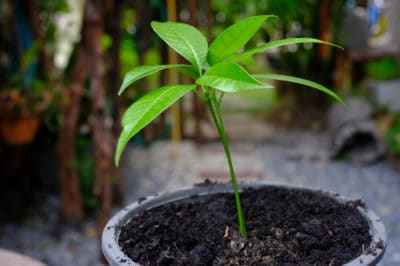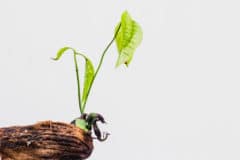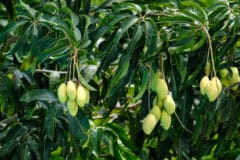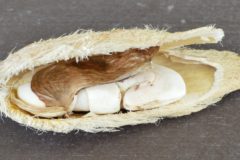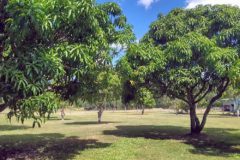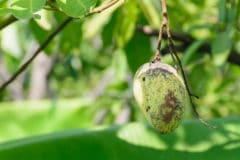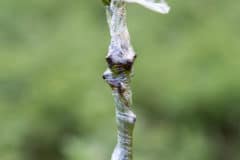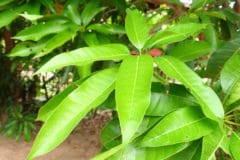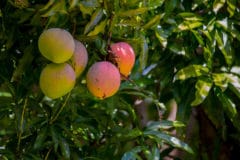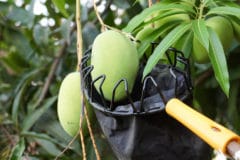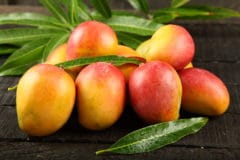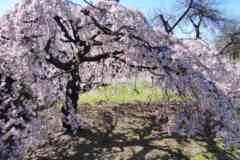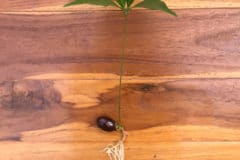Getting to Know Your Seedling
Mangos are divided into two races: Indian and Indochinese. Although both type of trees require the same care and cultural conditions, the seeds of each produce two different types of trees. Knowing what you are growing helps in cracking the code of what type of fruit you can expect once the tree reaches fruit bearing age.
Indian Mangos
One of the best features to distinguish between an Indian and Indochinese mango is the color and shape of the fruit. Indian mangos are typically more colorful, with mixes of reds, purples, greens and yellows, and the fruit shape is oblong or roundish. Other basic differences compared to Indochinese types include:
- These type of mango trees are less tolerant to humid conditions and are more susceptible to mildew and anthracnose.
- Indian mangos produce monoembryonic seeds, meaning the seedlings won’t necessarily resemble the parent tree due to hybrid crossing. The fruit produced can be equal, superior or not as good as the fruit from the parent tree.
Indochinese Mangos
Compared to Indian mangos, Indochinese mangos are less colorful and usually in shades of green and yellow. The fruit generally takes on an elongated shape. Other basic differences include:
- Indochinese mangos are more tolerant to humid conditions, and are relatively resistant to mildew and anthracnose.
- These type of mangos produce polyembryonic seeds, which means seedlings are the same as the parent tree and the fruit will be of the same quality. The seed can produce more than one seedling.
Basic Seedling Care
The size of the container your mango seedling is growing in determines how soon you’ll have to repot into a larger container, or if you can continue to let it grow in its present pot. If it’s planted in a 3-gallon (11 liter) container, you can allow it to grow for a year or more without replanting.
However, if your seedling was started in a 1-gallon (3.78 liter) container or smaller, you’ll will need to repot after a couple of months so it doesn’t become root bound, which can affect proper growth. Make sure the container the mango seedling is growing in has drain holes in the bottom so it doesn’t die of rot. Basic care includes:
- Grow the mango seedling in a fertile, well-drained potting mix.
- Once the seedling grows to about 12 inches tall, you can add slow-release fertilizer granules to the soil, following label directions on amounts.
- Mangos perform best in warm, sunny conditions, so once the seedling is hardened off to full sun, make sure to locate the container where it gets sun for most of the day.
- Water the container when the top inch of soil feels dry, allowing it to run from the bottom drain holes. You may have to water daily if conditions are hot and dry.
Once the mango seedling reaches 2 to 4 feet in height, you can plant into the landscape or keep it growing in a container. Once the seedling reaches 4 feet tall, it needs to be repotted into a 5-gallon (19 liter) pot so the roots have room to spread.
Mango trees grown from seed take about six years before they produce their first flowers and fruit. It will take the tree about 10 years before it reaches its fruit-producing prime and starts giving you an abundance of tasty mangos.
Expert Tip: Mango trees are hardy in USDA zones 9b through 11 and don’t tolerate freezing temperatures. If you live in a cooler climate, grow the seedling in containers and bring into a protected location during winter.
